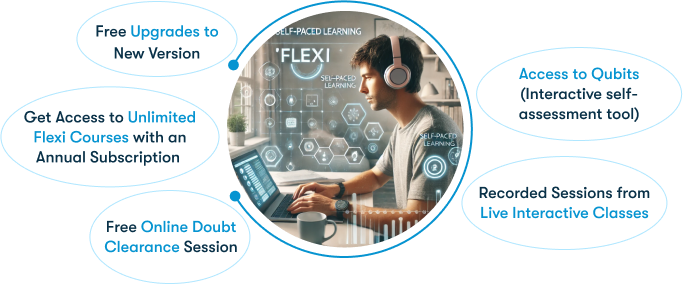We're open through the holidays to support your upskilling goals — book your session today!
We're open through the holidays to support your upskilling goals — book your session today!
You will get instant access via an email with login details to our LMS (LET - Learning Enhancement Tool) to access Flexi.

Purchase This Course
USD 199 +
USD 59 +
♱ Excluding VAT/GST
USD 999 +
USD 59
♱ GST @18% Applicable
100% Refund for Flexi Video (E-coursebook is non-refundable) if user is not satisfied with the Video and seeks refund within 7 days of purchase.
The annual subscription does not cover videos that are mandatorily bundled with courseware and labs.
To ensure the privacy of our clients, we use pseudonyms
I have watched all the videos and I am very much satisfied with the content and presentation.
The training was absolutely superb and I genuinely enjoyed each and every session of it. The content was extremely informative and incredibly useful. I have attended several pieces of training before but I can't recall any of them having such a strong impact. You have done a wonderful job and I appreciate your efforts.
Yes the materials are really helpful and will definitely come back to you for more.
I have watched about 95% of the recordings, it worked well for me. I will likely schedule more flexi classes once I have completed the test on this first one.
Yes i was able to complete the course. It was helpful. Thanks for all your support!
Hi Steve - It went well. That Flexi was great.
I was quite satisfied and got all to know what I need to. So all well done. Thanks
Overall I had a great experience and definitely coming back right after I finish the exam. I am thinking of taking Dev-Ope Leader course. Thank you for your support